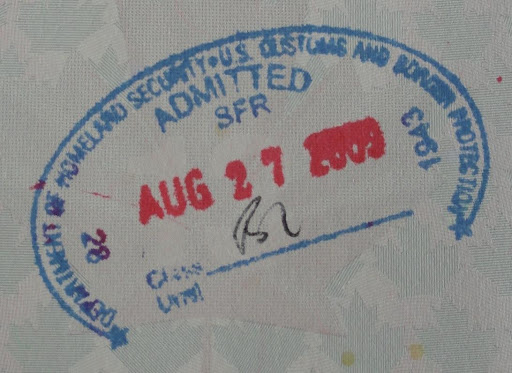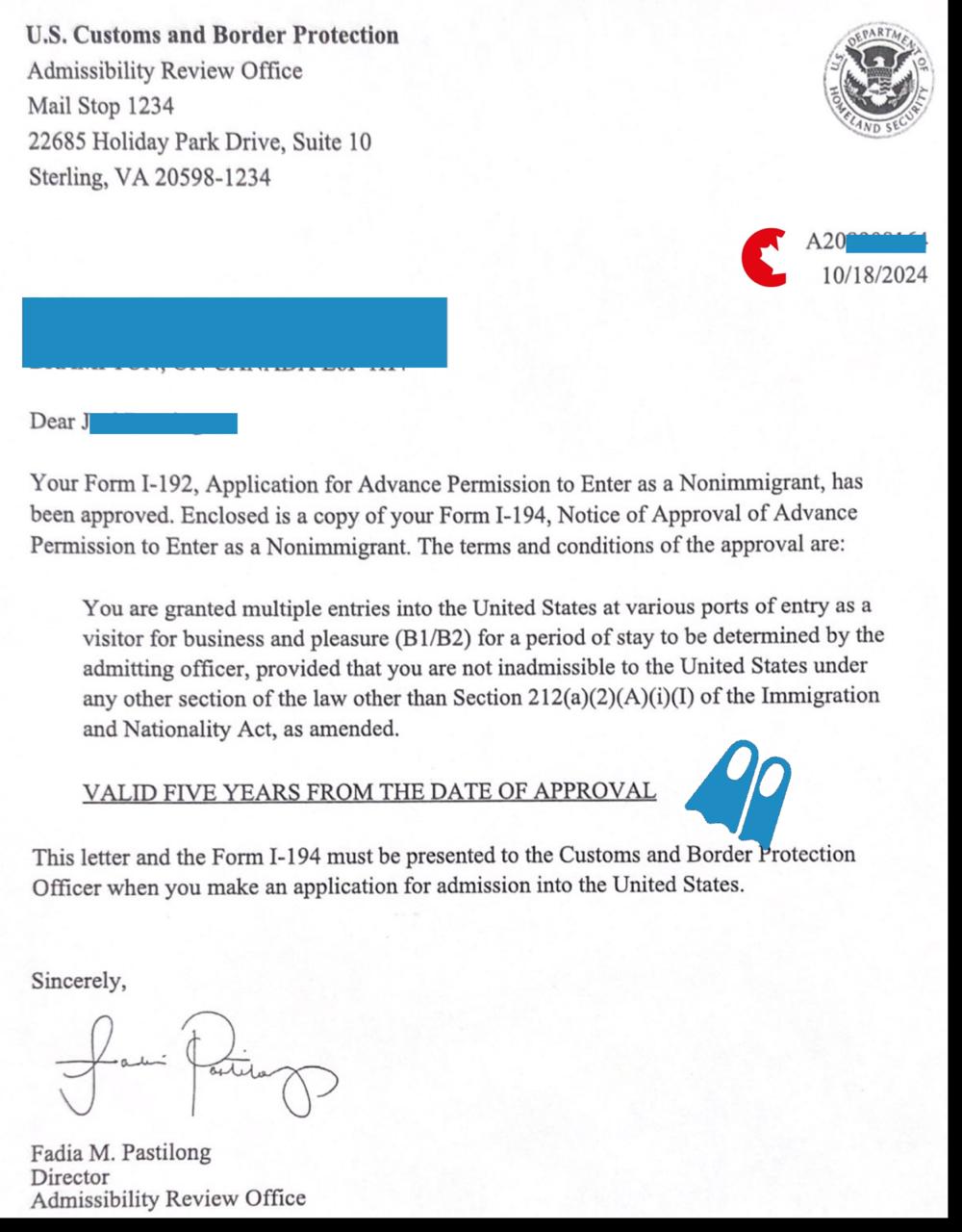
24/7 Customer Service
1 (866) 922-8159
QUALIFY BEFORE November 20th, 2025
Fill out the form for an instant evaluation
Your information is safe
Avoiding Bottlenecks at the Airport or U.S. Border
You can have a seamless and hassle-free experience when visiting the U.S. as a Canadian. However, some bottlenecks and threats could arise, especially if you hold a criminal record. Visitors, students, workers, or immigrants – whatever category they belong to – may face some threats when leaving or entering the U.S. These challenges could include searches, interrogations, delays, or exit/entry denials. You need to prepare, gather adequate information, and respect the laws and procedures governing the U.S. border and airport to circumvent these bottlenecks.
Before You Travel
Conducting proper research and planning is the first step you need to take to avoid problems at the airport or U.S. border. Here are a few things to note before you leave:
- Ensure your papers are in good condition and are up to date. Your passport should be valid for at least six additional months with enough blank pages for stamps. Your permit should not be damaged and should match your travel plans. Also, you ought to hold copies of your documents against a potential loss or theft.
- Read the permit requirements and limitations for your country of origin and destination country. You may require a passport, a valid permit, or other papers to visit or leave the United States, depending on the duration or purpose of your visit.
- Review your social media activity and travel history. If you have been or lived in specific countries designated hostile or high-risk by the U.S. government, you may receive extra questioning or scrutiny at the airport or border. You also ought to be careful about your social media posts or shares. Avoid contents the U.S. government may deem offensive, suspicious, or incriminating.
- When entering or leaving the U.S., prepare your luggage discreetly, avoiding restricted items like weapons, food, drugs, plants, animals, or large amounts of cash that are not permitted or need special permits.
- Apply for a waiver of inadmissibility if you hold a criminal record in Canada. You will be required to apply for a waiver of inadmissibility to legally enter the U.S. if you were convicted of an offense that makes you inadmissible into the United States, like a drug crime, felony, multiple misdemeanors, or an offense involving moral turpitude. The process of applying for a waiver could last several months or longer; you ought to submit your application for a waiver well ahead of your travel date.

At the Airport or Border
The second step to circumventing airport or U.S. border bottlenecks is following the rules and cooperating with border officials when entering or leaving the country. Let’s talk about some of the things you should know and do during your arrival or departure:
- Prepare your documents and complete any declarations or forms. You will need to showcase your permit, passport, and any other required papers for your trip. Additionally, you have to complete an arrival/departure record or a customs declaration form, depending on your destination and status. These forms are accessible online or at the border or airport.
- Be polite and honest when responding to questions. The border or airport officials will likely ask you a few questions, such as your name, nationality, travel purpose, address, U.S. contacts, or duration of stay. Truthfully and respectfully answer these questions, avoiding vague, evasive, or inconsistent answers. Also, avoid making arguments or jokes that could annoy or offend the officials.
- Respect all security and privacy protocols. Your luggage, electronic gadgets, or person may be subject to a search at the airport or border. You need to comply with the officials' demands during a search without resisting or obstructing the search. Also, you need to prepare to unlock your gadgets and provide your pins if the officials demand them. You have the right to request a lawyer or supervisor if you think that the search is unlawful or unreasonable or your rights are being violated.
- Know your rights and relevant alternatives if you are denied exit or entry. You have the right to know the purpose of the denial and request a review of the decision. You also may be able to apply for humanitarian parole or a waiver of inadmissibility, depending on your situation and the officials' discretion. You need to avoid signing any papers or agreeing to any conditions you do not understand or that may impair your eligibility to visit the U.S. in the future. You also need to hold a record of your experience and communicate with a consulate or attorney if you require assistance or counsel.
After Traveling
The third step to take in order to avoid any bottlenecks at the airport or U.S. border is to follow up and care for any repercussions or issues that arise from your trip. Let’s see some things you ought to do after returning or settling from the trip:
- Keep your receipts and papers. You should keep your permit, passport, forms, waiver, and other papers connected to your trip. You also should keep any receipts or records of your purchases, expenses, or monetary exchanges. These may be helpful for various reasons like proof of income, taxation, or proof of compliance with the law.
- Obtain legal counsel or help in the face of any problems, such as fines, penalties, lawsuits, or deportation, from a qualified attorney or a credible institution. You should not delay or avoid addressing these problems, as they may aggravate or impair your rights or alternatives.
- Report any updates or reviews to your information or status. You also should inform the authorities or agencies concerned if there is any update or change to your information or status. These changes could be your address, employment, education, phone number, criminal record, or marital status. Failing to do this may affect your requirements or eligibility to make future trips or immigration into the U.S.
The last step to circumvent any bottlenecks at the U.S. border or airport is to learn from your experience and reach out for available resources and tips to guide your future trips. The following are some things you ought to do to improve your traveling or immigration prospects:
- Get professional consultation or guidance. You ought to get professional guidance or consultation from a certified immigration consultant, a qualified attorney, or a credible institution concentrating on immigration or travel issues. They can assist you in assessing your suitability and eligibility, preparing your application papers, understanding your rights and obligations, and representing you in any appeals or proceedings.
- You should stay informed on updated laws and policies that affect your immigration or travel status, such as your permit requirements, the waiver process, inadmissibility grounds, or the border and airport procedures. You also want to know any developments or reviews in your country of residence, origin or the U.S.
- Review your travel or immigration alternatives and goals. You should assess your travel or immigration goals for feasibility, desirability, and pragmatism. You also should compare and contrast the risks and benefits of traveling or immigrating to the U.S. with other possible destinations.
- Become part of a community or support network. You need to join a community or support network of individuals with similar interests or situations, like other Canadians with criminal records who have visited or immigrated to the U.S. as well as other immigrants or travelers who have encountered challenges at the U.S. airport or border. These communities and support networks are accessible online or offline and can offer helpful aid, counsel, or encouragement.
Resolving U.S. Entry Issues
For Canadian residents with a criminal record or past border refusal, obtaining a U.S. Entry Waiver is the only recognized method to regain admissibility into the United States. This process requires thorough preparation, accurate documentation, and adherence to the requirements set by U.S. Customs and Border Protection.
With extensive experience assisting Canadians, we have successfully guided over 15,000 U.S. Entry Waiver applications to completion. Our team ensures that every step is handled professionally, minimizing delays and ensuring compliance with all regulations.
Our Services Include:
- U.S. Entry Waivers for Criminal Records – For individuals with past criminal convictions preventing entry.
- U.S. Entry Waivers for Overstay Issues – Resolving situations involving unauthorized stays in the U.S.
- Border Inquiries Assistance – Guidance for addressing specific concerns raised at the border.
- Emergency Parole Applications – Support for urgent cases requiring immediate resolution.
Start Your Application
Start Your Application If a U.S. Entry Waiver is required for your situation, begin the process today. Professional assistance ensures efficiency and compliance, helping you secure the documentation needed to cross the border confidently and without complications.
Visual Proof of Success
What does success look like? Here's a sample of an approved U.S. Entry Waiver issued via the eSAFE portal:

By choosing our services, this can be your success story. Start your journey toward admissibility today and experience the confidence of seamless travel.

Eligibility
Check to see if you are eligible for a U.S. Entry Waiver.


Application Form I-192 for Advance Permission to Enter as a Nonimmigrant e-SAFE process for citizens of Canada:
 Canada
Canada
 Palau
Palau
 Federated States of Micronesia
Federated States of Micronesia
 Marshall Islands
Marshall Islands
The 41 Entry Clearance Program Member Countries:
 Andorra
Andorra Australia
Australia Austria
Austria Belgium
Belgium Brunei
Brunei Chile
Chile Croatia
Croatia Czech Republic
Czech Republic Denmark
Denmark
 Estonia
Estonia Finland
Finland France
France Germany
Germany Greece
Greece Hungary
Hungary Iceland
Iceland Ireland
Ireland Israel
Israel
 Italy
Italy Japan
Japan South Korea
South Korea Latvia
Latvia Liechtenstein
Liechtenstein Lithuania
Lithuania Luxembourg
Luxembourg Malta
Malta Monaco
Monaco
 Netherlands
Netherlands New Zealand
New Zealand Norway
Norway Poland
Poland Portugal
Portugal San Marino
San Marino Singapore
Singapore Slovakia
Slovakia Slovenia
Slovenia
 Spain
Spain Sweden
Sweden Switzerland
Switzerland Taiwan
Taiwan United Kingdom
United Kingdom
Preparation Checklist for Visiting the United States
- Ensure your passport is valid and not expired.
- Bring adaptors for 110V power outlets if required
- Prepare itinerary and confirm accommodation details.
- Secure travel insurance.
- Explore transportation options for getting around.
- Carry sufficient local currency (USD) and payment methods.
- Download travel maps and relevant apps.
- Arrange for internet access during your stay.
- Stay updated by following the latest news.
- Have emergency contact information readily available.
- Consider a language translation app if needed.
- Obtain your approved U.S. Entry waiver from DHS, or necessary travel authorization.
© 2024 SERVICES OF CANADA - All Rights Reserved